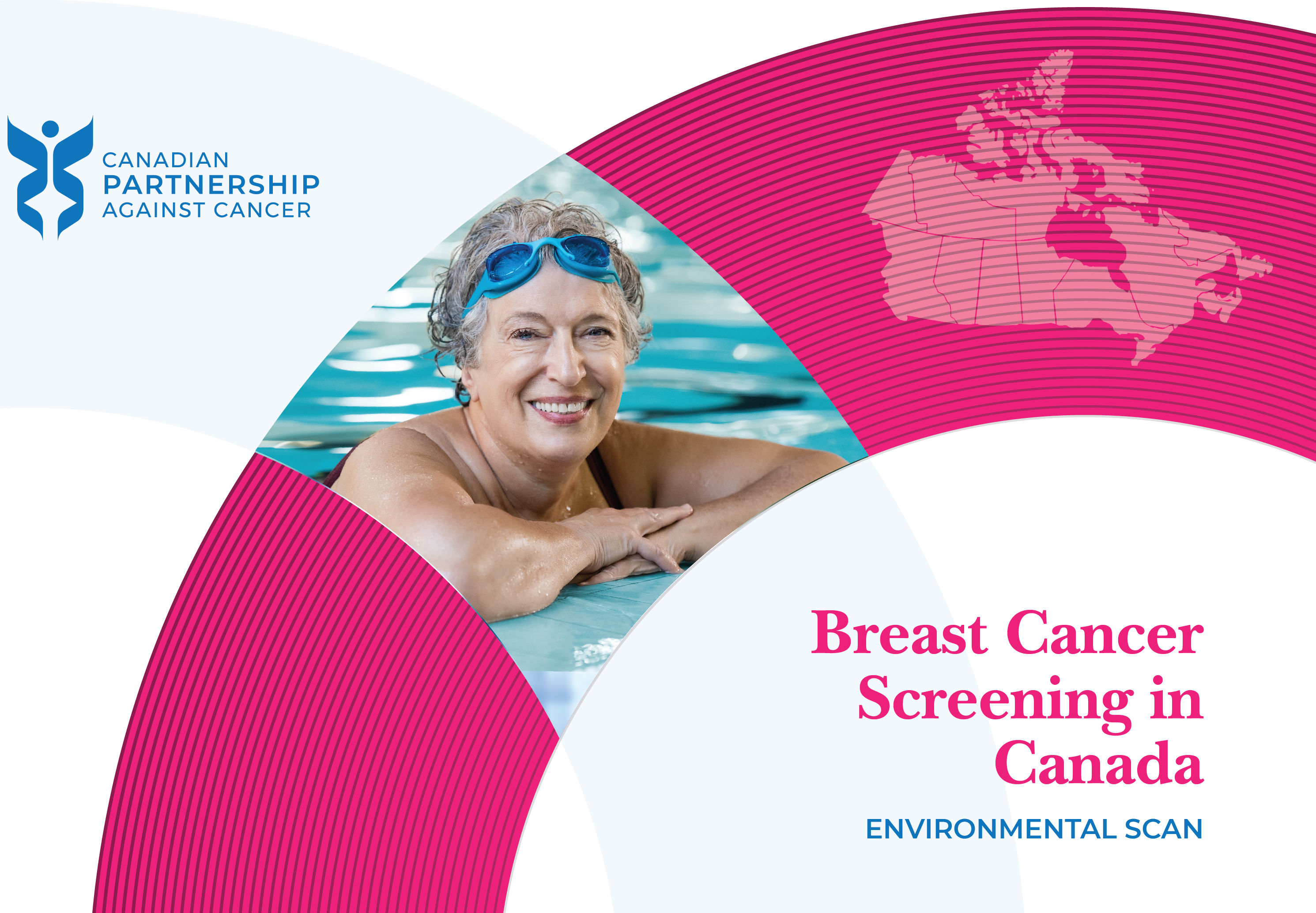Breast cancer screening in Canada: Environmental scan (2019-2020)
November 27, 2020
Highlights of breast cancer screening programs’ activities and strategies
The Partnership collects information on national, provincial, and territorial breast screening guidelines, strategies, and activities. The information for this breast cancer screening report was collected in June and July 2019. Many provinces and territories provided updated data in early 2020, and this report was updated in November 2020.

Quick facts from this breast cancer screening report
- Organized breast screening programs are available in 12 provinces and territories across Canada. Nunavut does not have an organized breast screening program.
- Most provinces and territories recommend screening asymptomatic individuals at average risk for breast cancer with a mammogram every two years starting at age 50 until age 74 or 75.
- In most provinces and territories, participants can be referred to breast screening programs through physician and self-referral. In addition, letters of invitation are used as a recruitment strategy in six provinces.
- Screening mammography is commonly used as an entry-level screening test for breast cancer. The use of modalities other than mammography may be dependent on a person’s risk.
- All programs send out result letters to individuals after they obtain a normal mammogram result. In the case of an abnormal result, programs send result letters to both primary care providers and participants.
- Ten Canadian jurisdictions report implementing strategies to increase participation in breast screening among First Nations, Inuit, and Métis.
- Nine provinces and one territory have implemented strategies to help support breast screening participation in underscreened populations.
Abnormal call rates in breast cancer screening
ACR tells us what percentage of mammograms are identified as abnormal, requiring screening participants to have follow-up procedures. This is a key quality indicator of breast screening and reducing ACRs in Canada could minimize potential harms from over-screening and avoidable follow-up tests.
The Partnership has developed a Framework for Action to Address Abnormal Call Rates in Breast Cancer Screening to support screening programs in their efforts to reduce ACRs.
Downloadable content
